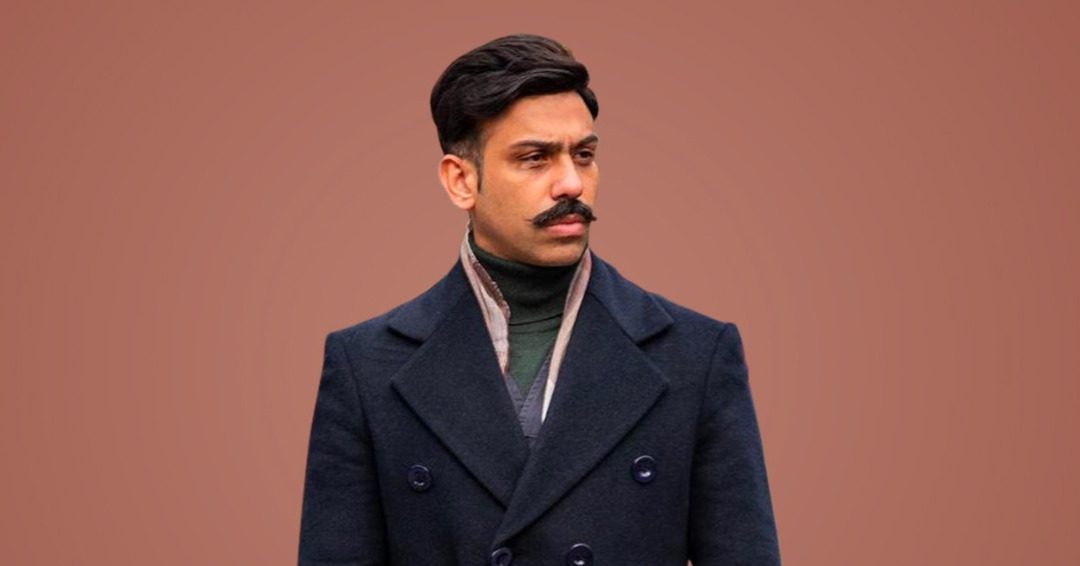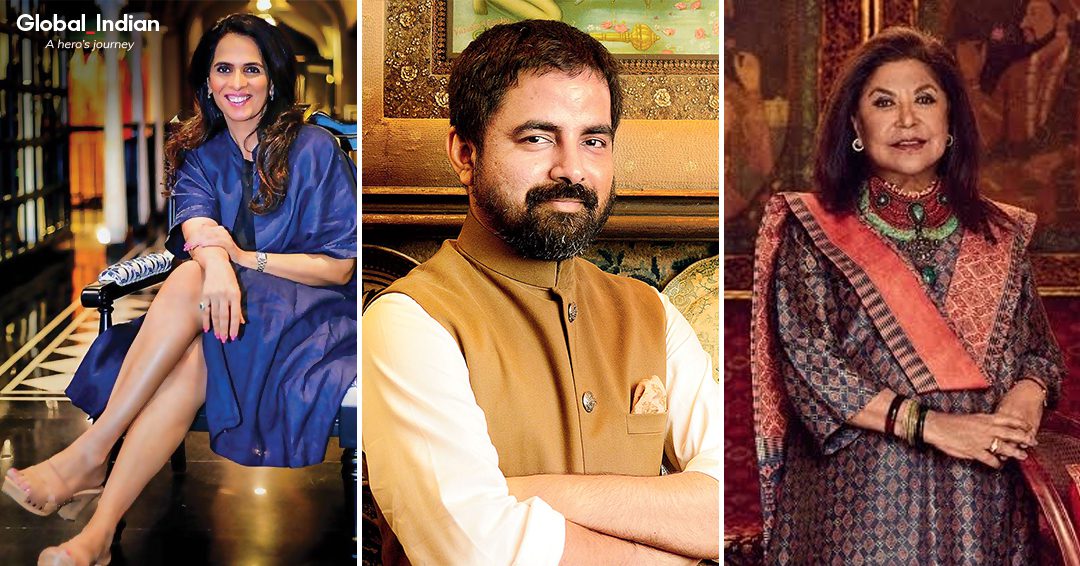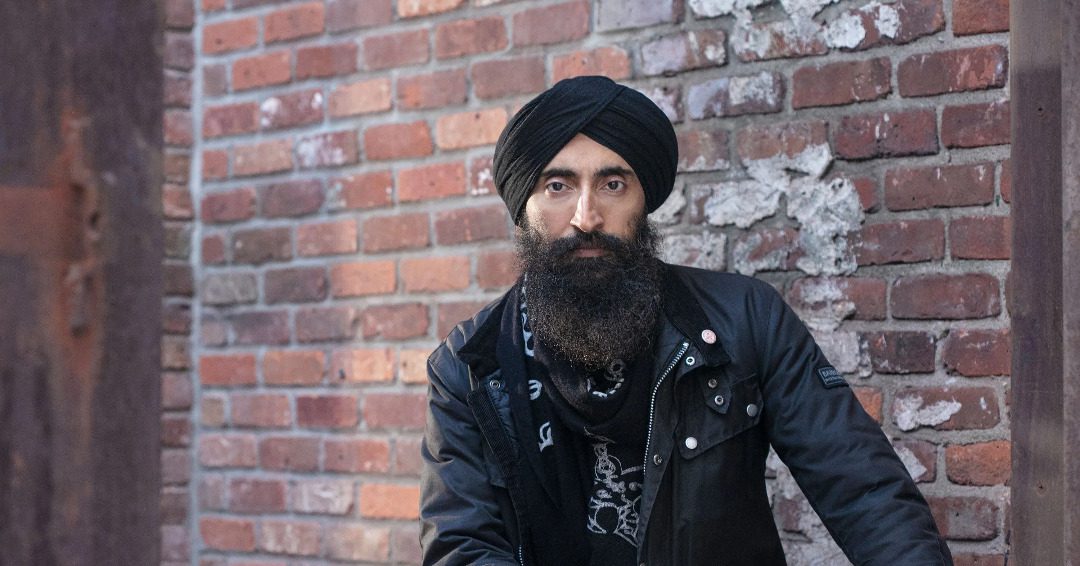(September 17, 2021) Handlebar moustache and a sleek style is what makes British-Indian designer Saran Kohli stand out among the rest. The 34-year-old, who has an eponymous label, has become a name to reckon with in the fashion circles. So much so that even Hollywood‘s biggest studio Marvel couldn’t ignore the designer who has styled the who’s who of the entertainment industry. Kohli, who fell in love with fashion as a teenager while helping his mom set up her boutique, has now designed for one of the most-anticipated films of 2021 Eternals.
Kohli, who started with big labels like Hugo Boss and Banana Republic, has come a long way in his Global Indian journey.
Baby steps into fashion
Born in East London in a Sikh family to immigrant parents who moved to the UK in the 70s, Kohli shifted to India at the age of two after his parents’ divorce. It was in New Delhi that Kohli spent his initial days at his grandparents house while his mother started her own fashion business to build a new life for them. India gave Kohli the perfect opportunity to embrace his culture, and after spending 10 years, he returned to London with his mom where she opened her first boutique.
It was his mom’s boutique that became a schooling ground for Kohli in fashion. He would spend hours helping her in her sales and choreographing catwalk shows and that’s how Kohli was introduced to the world of fashion. The texture, fabric and cuts is something that always attracted Kohli, and soon he found himself enrolled in London College of Fashion. After graduating in fashion management, Kohli found himself working for Japanese designer Michiko Koshino as a public relations and marketing assistant. This first hand experience of working with a designer helped Kohli understand the nuances of the craft and opened doors for him in labels like Hugo Boss and Banana Republic.
Knocking on the door with eponymous label
After learning the trick of the trade from the masters, Kohli launched his own fashion label Saran Kohli in 2009 – a one-stop shop for designer menswear. “I wanted to find that fine line between my heritage and a sartorial finishing with an informal approach to clothing where it could be worn in multiple fashion,” he told Voice of Fashion. While his collections are manufactured in the UK and Europe, his craftsmanship is rooted in India as he works with the artisan families that his mom originally collaborated with.
View this post on Instagram
Within two years of introducing his label, Kohli bagged the Best Newcomer Award in Fashion Design at International Asian Fashion Awards 2011. This catapulted Kohli’s business and in no time, Saran Kohli Label became a favorite with celebrities across the globe. From singer Jay Sean to cricketer Sachin Tendulkar to Mayor of London Sadiq Khan, Kohli has styled the best in the world. It’s Kohli love for music, dance, travel and culture that often inspire his collections.
After featuring in New York Times, GQ UK, UK Esquire and Asian Wealth Magazine, Saran Kohli Label opened its first official store in London in 2016, and has been going strong ever since. While Kohli has styled some of most well-known personalities, his real big break came in the form of Marvel’s Eternals.
The Marvel moment
It was in 2019 that a call from Marvel Studios‘s costume department that took Kohli by surprise. The designer received a request to create outfits for 52 dancers for a sequence in Marvel’s most-anticipated film Eternals that has Kumail Nanjiani playing the first South Asian superhero. Kohli, who himself is a choreographer and dancer, leapt at the opportunity. Keeping up with Marvel’s stringent confidentiality protocols, Kohli couldn’t understand the magnitude of the project till he signed on the dotted lines.
“It was a direct call from the costume department of Marvel Studios. Initially, they didn’t even tell me if it was for a film. They just told me that they are looking for some costumes for this scene that has got a bit of a dance sequence. This is the kind of feel. I didn’t interrogate so much initially because I have done film costume design in the past and I thought it must be one of those regular films only. Later when they sent an email, the film name was different, it was a made-up name of a film. They asked me to meet them at the Pinewood Studios. And when they took this name I figured out that it is going to be a big-budget film. I initially thought it might be a Bollywood flick. But later when I spoke to one of the heads of the costume department at Marvel, I realized it was something big for sure,” he told the Times of India.
Working with Marvel Studio was an enriching experience for Kohli as it gave him a chance to represent his Indian roots. “Marvel doesn’t just have an American audience, it is in every corner of the earth. It makes us feel appreciated and also inspires a lot of young talent to embrace who we are,” he added.
Vitiligo awareness
While Kohli was all over the news for bagging a plum project like Marvels, his range of vitiligo masks in 2020 equally became the talk of the town. For someone who has struggled with the skin condition for years, Kohli decided to spread awareness and combat the stigma around it through his new range. It was the age of 16 that Kohli saw the first white spot on his face and for years, he hid it behind his glasses and full-length clothing. It took him many years to be comfortable in his skin, and now he has started a dialogue to create awareness on vitiligo with his collection.
View this post on Instagram
“It is a great time to open up the avenues of fashion to the debate surrounding skin and a person’s skin color. We, as a generation, have been able to vocally express things that the previous generation has not been able to do,” he told Indulge Express. Parts of the proceeds raised for the range were donated to the Vitiligo Society as a part of his advocacy and awareness campaign.
The 34-year-old Kohli, who fell in love with fashion at a young age, found his true calling in his label. And the designer has now put Indian fashion on the global map by designing for one of the biggest Hollywood films.





